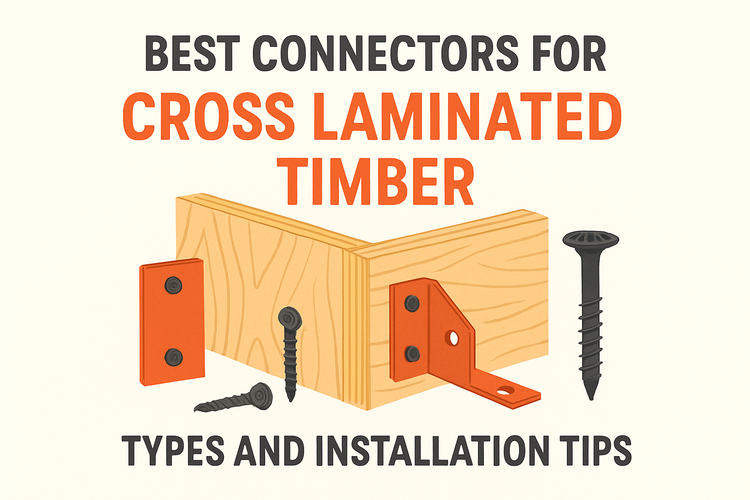Best Connectors For Cross Laminated Timber: Types And Installation Tips

Understanding the Importance of Proper Connectors for Cross Laminated Timber
Cross-laminated timber (CLT) is growing in popularity thanks to its strength, sustainability, and versatility. To ensure structural integrity, selecting the right connectors is essential.
CLT panels behave differently from traditional timber products, requiring highly specific connectors to maintain load distribution and security. Improper connector choices can compromise the overall performance of your build. Make sure to use compatible connectors for cross laminated timber that are specifically designed for CLT projects.
Types of Connectors Recommended for CLT Structures
CLT applications require a combination of mechanical connectors that provide both shear and moment resistance. Common types include angle brackets, joist hangers, and custom-engineered connectors.
Joist hangers are frequently used to join floor panels to wall panels when horizontal support is needed. Their design offers superb stability and ease of installation. Similarly, angle brackets are essential for right-angle joints where elements like walls meet floors or roofs. Their robust construction ensures durability under heavy loads.
Some designs integrate hidden connectors, which provide a clean aesthetic without compromising strength. These are commonly used in exposed timber structures to maintain the architectural appeal.
Always match connector types with the specific load and joint requirements of your CLT design. General-purpose connectors often lack the performance needed for engineered timber applications. Using manufacturers with dedicated product lines for CLT will ensure code compliance and reliable structural results.
Installation Tips for Maximum Strength and Durability
Precise and secure installation of connectors is vital for structural performance. Mistakes during assembly can result in slippage or weakening of the joint.
Before installing, review manufacturer guidelines and structural plans thoroughly. Use compatible screws and nails that are recommended for the chosen connectors. Fastener placement, angle, and depth all influence the strength of the connection. Pre-drilling is often necessary to avoid timber splitting and to ensure flush finishes.
Environmental considerations also come into play. For outdoor applications or buildings exposed to high moisture, corrosion-resistant finishes on connectors and fasteners are essential. This prolongs the life of the assembly and prevents deterioration.
Proper clamping and use of temporary supports help maintain alignment during fastening. Most importantly, never substitute fasteners or modify connectors without engineering consultation, as this can invalidate structural approvals.
Leveraging Connectors for Complex Load Path Scenarios
The modular nature of CLT panels allows for a wide range of architectural forms. However, this complexity increases the demand on joints and connectors.
Timber buildings with large spans, cantilevers, or lateral loads benefit from specialized connectors like high-load angle brackets and interlocking restraint systems. Using products such as restraint straps helps control uplift and shear forces. They are particularly critical in multi-storey constructions or regions exposed to seismic or wind loads.
For high-wind areas, high wind ties & timber connectors are key to increasing building lateral stability. Configurations like T- and L-brackets provide anchorage while allowing dimensional flexibility. Consider the entire load path from roof to foundation and integrate connectors accordingly.
Collaborating with structural designers ensures that loads are calculated and distributed to suit the overall design. Always verify that applied connector solutions match the load cases encountered in real-world usage.
Checking for Compatibility with Other Timber Solutions
Many CLT buildings use hybrid timber construction incorporating glulam beams or traditional framing. Ensuring connector compatibility between these systems is crucial.
Consider using long-span connectors that bridge different timber systems. Connectors for glulam timber can often be adapted to integrate different materials and still support consistent load transfer. Lightweight connectors with multi-axial capabilities are particularly useful at transition joints.
Ensure all connectors used across such transitions are designed for the material properties involved — glulam has different tolerances and behavior under stress compared to CLT. Uniform expansion, moisture movement, and shrinkage rates also factor into connector performance across systems.
Ultimately, understanding how various timber types interact and choosing connectors that support seamless integration maintains structural harmony and maximizes long-term stability.
